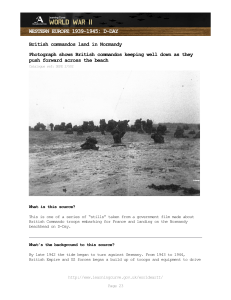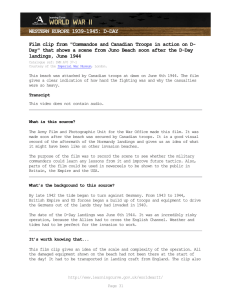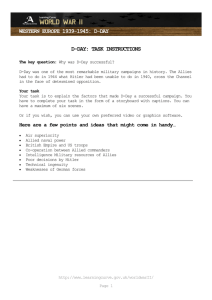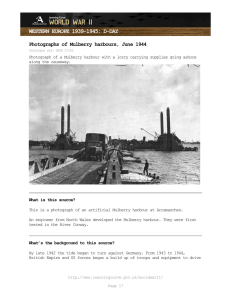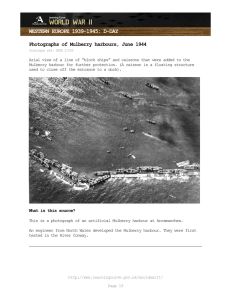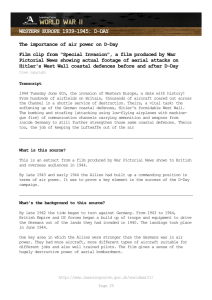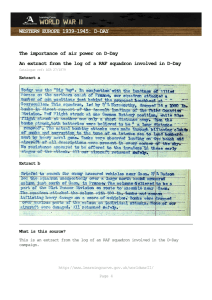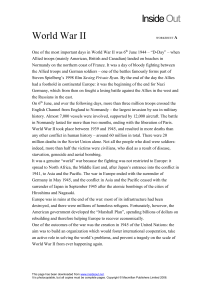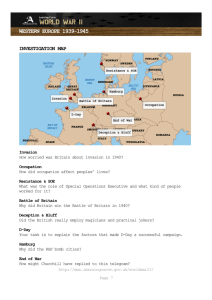WESTERN EUROPE 1939-1945: D-DAY
advertisement
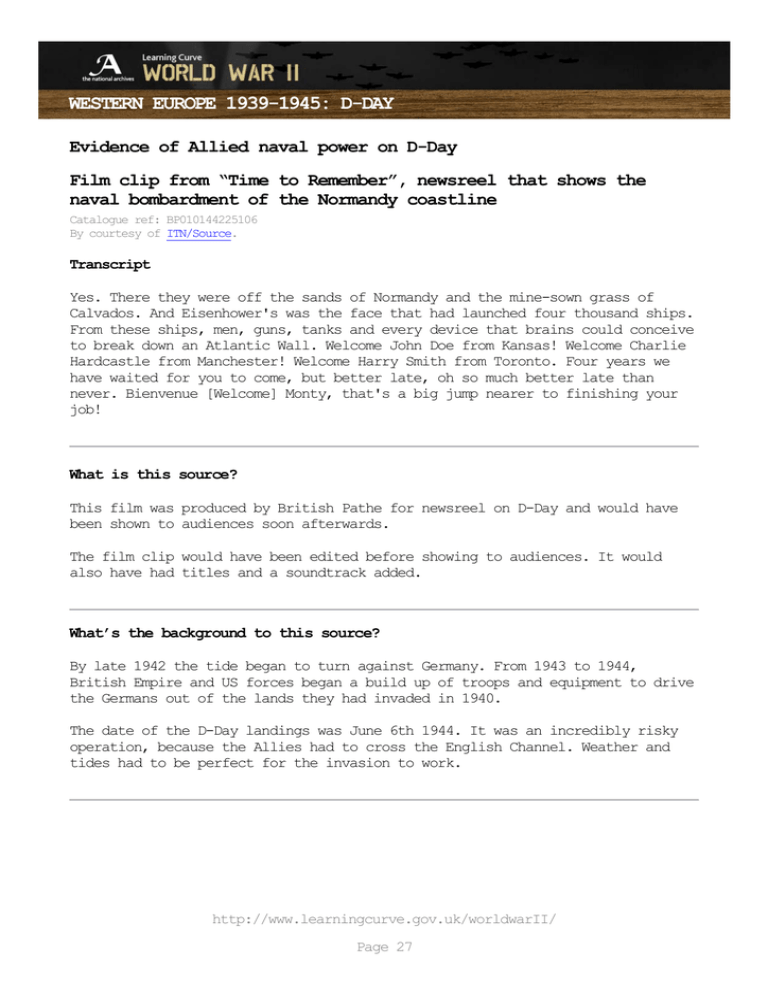
WESTERN EUROPE 1939-1945: D-DAY Evidence of Allied naval power on D-Day Film clip from “Time to Remember”, newsreel that shows the naval bombardment of the Normandy coastline Catalogue ref: BP010144225106 By courtesy of ITN/Source. Transcript Yes. There they were off the sands of Normandy and the mine-sown grass of Calvados. And Eisenhower's was the face that had launched four thousand ships. From these ships, men, guns, tanks and every device that brains could conceive to break down an Atlantic Wall. Welcome John Doe from Kansas! Welcome Charlie Hardcastle from Manchester! Welcome Harry Smith from Toronto. Four years we have waited for you to come, but better late, oh so much better late than never. Bienvenue [Welcome] Monty, that's a big jump nearer to finishing your job! What is this source? This film was produced by British Pathe for newsreel on D-Day and would have been shown to audiences soon afterwards. The film clip would have been edited before showing to audiences. It would also have had titles and a soundtrack added. What’s the background to this source? By late 1942 the tide began to turn against Germany. From 1943 to 1944, British Empire and US forces began a build up of troops and equipment to drive the Germans out of the lands they had invaded in 1940. The date of the D-Day landings was June 6th 1944. It was an incredibly risky operation, because the Allies had to cross the English Channel. Weather and tides had to be perfect for the invasion to work. http://www.learningcurve.gov.uk/worldwarII/ Page 27 WESTERN EUROPE 1939-1945: D-DAY It’s worth knowing that... Britain and the USA the Allies were the world’s leading naval powers. One of the reasons why the Germans had not invaded in 1940 was the power of the Royal Navy. The role of the navy was crucial on D-Day. They had to get the troops safely to Normandy. They also had to supply them with weapons and supplies. At the same time they also had to protect the troops from enemy ships and also use their big guns to try and destroy enemy defences. As well as these roles, naval ships also picked up wounded troops and took them back to Britain. How does this source help us to understand why D-Day was successful? 1. Does this film clip support or contradict the view that the operation was difficult and complicated? 2. Does film clip support or contradict the view that the operation was effective? 3. Does film clip allow you to say that the naval power of the Allies was the most important factor in the success of D-Day? 4. How would you sum up the main value of this source to the historian? • • Will you include this source (or part of it) in your storyboard? If you do use it, what are the main points you will make in your caption? Use this framework to plan your storyboard. http://www.learningcurve.gov.uk/worldwarII/ Page 28
